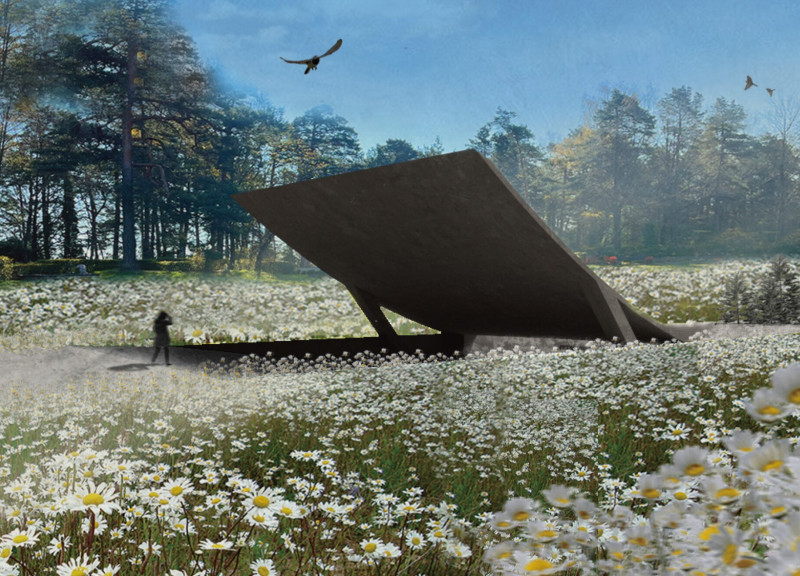5 key facts about this project
The design known as "Split" is situated in a landscape that thoughtfully merges life and death. The setting draws inspiration from Latvian folklore, which embraces nature and the cycle of life. The core idea is to view death not as an end, but as a transformation. This encourages individuals to reflect personally and connect with their memories in a meaningful way.
Site Approach and Spatial Organization
The approach begins from the west, guiding visitors through a dark and quiet forest. This environment creates an immersive experience that invites introspection. As people navigate the path, they become more aware of their emotions. Arriving at the main area reveals a sculptural columbarium that is partially embedded in the ground. Its presence establishes a closer connection to the earth, generating a sense of reverence for those who have passed.
Circulation and Visitor Experience
Movement through the site is facilitated by a single stairway used for both entering and exiting. This design choice allows visitors to experience the space continuously. Each direction of movement alters the emotional response. The layout creates a flow that emphasizes memory and continuity, allowing individuals to form a deeper connection with their surroundings.
Natural Elements and Symbolism
The daisy gardens play a key role in the design, symbolizing hope and renewal. These flowers, which are the national flower of Latvia, offer a contrast to the seriousness of the columbarium. This integration of nature enriches the space, fostering a dialogue between life and memory that enhances the experience for those who visit.
Ceremonial Spaces
Designated meeting gardens are included to hold ceremonies, emphasizing the significance of shared experiences in the grieving process. These areas provide a communal space for reflection and mourning. The inclusion of such spaces highlights the importance of connection among visitors and supports the notion of collective healing during times of loss.
The columbarium incorporates stone plaques, which add a tactile element to the design. The choice of this durable material aligns with the themes of permanence and remembrance. These details serve as lasting tributes and contribute to an architectural language that resonates with the emotional weight of memory.























































